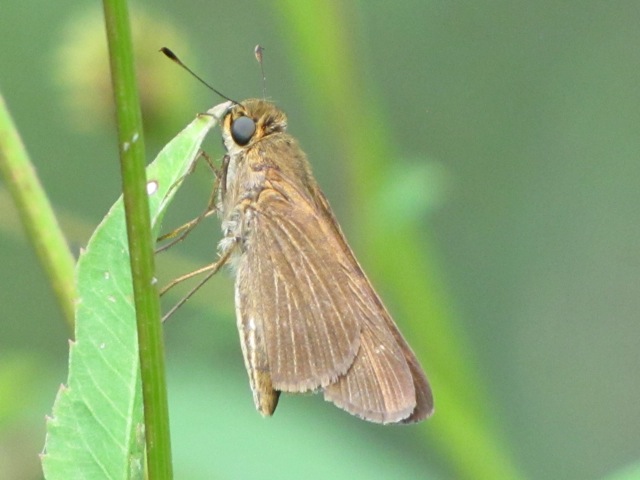
I think it might surprise many people how rewarding late summer and early autumn butterfly watching can be. I’m not just talking about the monarch migration, either, although that tends to get the most attention & media coverage. In fact, this time of year has a lot of other benefits for a keen butterfly watcher, whether you’re in your own back yard or a natural park.
For one thing, many of the butterflies with multiple generations per summer have been building up their populations to kind of a crescendo. I’ve seen this with the Black Swallowtails in my garden, to give you one example. I usually have plenty of chrysalises that overwinter, and most of them successfully eclose in the late spring. Those adults then disperse, and most often I find only a few eggs or caterpillars of each subsequent generation, until the last one that shows up around now. It makes sense: of the spring adults, some of them are eaten by predators while only a few find each other to mate & lay eggs, and only some of those are laid in my own garden, while others probably are in my neighbors’ gardens or stands of Queen Anne’s Lace somewhere nearby. But those that survive to be the second generation lay their own eggs, those grow up and lay their eggs too, until we have lots of butterflies now trying to lay eggs that will become the overwintering generation. Many of the butterflies we see locally spend the winter in chrysalis like the Black Swallowtails do. That’s why end-of-summer nectar sources and larval hostplants are so important to the survival of local butterfly populations from year to year. As butterfly watchers, we get to observe this fascinating part of their life cycle and hopefully see more individuals than we did earlier in the summer. Yay!
But if you’re bored with the species you’ve already seen this summer, don’t worry. We also have some new appearances this time of year, species we didn’t see anytime else. Some of those are specialists with only one generation per year, others are species that don’t live here all summer long and wander north toward us around now. Local butterfly blog LepLog has recently reported sightings of Cloudless Sulphur (much larger than our usual Clouded); Ocola Skipper, and even Clouded Skipper.

Other butterflies I have better luck finding in the fall include:
- Common Buckeye
- Checkered White
- Fiery Skipper
- Crossline Skipper
Finally, a key benefit of butterfly surveys in the fall is the gorgeous weather. Currently the heat and humidity are still pretty high. But never fear, better weather is coming! Meanwhile, you might want to review field guide entries on the butterflies I mentioned above, so you will recognize their key field marks quickly. I haven’t listed all of the butterflies you might see this time of year either, of course—there are so many kinds of skippers even after 15 years I’m not familiar with all of them yet. But reviewing field guide illustrations and descriptions in the comfort of your air conditioned home will help you when you do get to your next field survey.
I hope you enjoy butterfly surveys at Woodend this time of year. Even if you’re feeling a bit drained after the new species sightings tapered off in late July, never fear. Better butterflies, and better weather, are headed our way. I look forward to seeing you all out in the field again sometime soon! Stay tuned for an early fall potluck as well, so we can get together in a group for some relaxation and chatting.